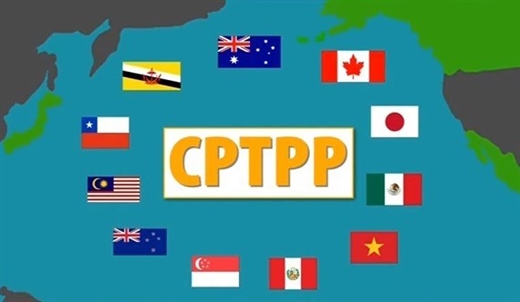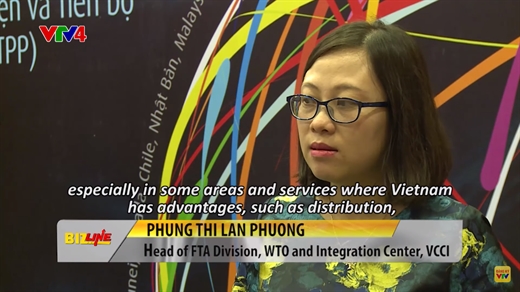Australia supports Economic Reform in Vietnam (Aus4Reform)
- en
- News and Media
- Aus4Reform News
- Australia’s market potential from CPTPP perspectives
13/5/2019
Australia’s market potential from CPTPP perspectives
As one of the 20 largest economies and one of the 10 most attractive destinations for FDI in the world, Australia has become one of Vietnam's most potential export and investment markets.
Australia’s market potential from CPTPP perspectives
As one of the 20 largest economies and one of the 10 most attractive destinations for FDI in the world, Australia has become one of Vietnam's most potential export and investment markets.
Especially, both Australia and Vietnam have recently implemented the CPTPP which is considered a favorable condition to promote trade and investment.
 |
Bilateral export and investment between Vietnam and Australia
According to the WTO center (VCCI), after 10 years, Vietnam Exports of goods to Australia has not been breakthrough, estimated around 4.8 billion USD (2008-2018). Compared with other export partners of Vietnam, Australia is only the 13th largest export market of Vietnam in 2017, with export value much lower than key export markets of Vietnam such as: The US, China, Japan, Korea, etc. For Australia, Vietnam is the 14th importer (with 3.2 billion USD).
In terms of service exports, after 10 years, Vietnam's service exports to Australia increased double, from 500 million USD in 2007 to 1 billion USD in 2017. Yet Vietnam’s export value to Australia is still modest.
Vietnam ranks 4th among ASEAN countries in exporting services to Australia after Singapore, Indonesia and Thailand. In particular, tourism services are mainly. Investment from Vietnam to Australia increased fivefold in 10 years, from nearly 140 million USD in 2008 to nearly 700 million USD in 2018. However, this number is not really impressive.
The reason for the total export turnover of Vietnam to Australia is still limited
According to Raymond Mallon, Advisor of Australia supports Vietnam's economic reform Program (Aus4Reform Program), the first factor that makes export turnover low is small scale of Australia market (only about 25 million people), with small population which will always have restrictions on exports, especially consumer products.
 |
| Raymond Mallon, Advisor of Australia supports Vietnam's economic reform Program (Aus4Reform Program) |
Secondly, Vietnam's competitive advantages in exports are also Australia’s advantage. For example, both Vietnam and Australia are famous for high quality agricultural products and processed foods. So, agricultural exports from Vietnam will not have a high proportion. However, there are niche markets that Vietnam can compete with Australia. For example, tropical fruits, Vietnam and Australia have different harvest times, so Vietnam should take advantage of this.
Another reason is, Australia has the highest SPS (Sanitary and phytosanitary measures) in the world. These standards are very high and difficult to achieve. To overcome this barrier, Vietnam's manufacturing industries need to have a certain scale.
In particular, Vietnam’s export structure is not complementary to Australia’s import structure. Comparing the top 10 imported products in Australia and the top 10 exports by Vietnam in 2017, only three imported products to Australia matched Vietnam’s largest export products. Moreover, some of Vietnam’s traditional key export products, such as agricultural products and textiles, are products Australia imports very little.
Take advantage of opportunities from CPTPP
Before CPTPP, commercial goods between Vietnam and Australia enjoyed the tariff preferences of AANZFTA (The ASEAN - Australia / New Zealand Free Trade Agreement). Compared to AANZFTA, in CPTPP, Australia has more commitments to open markets for goods, services, investment,...for Vietnam, opening new opportunities for Vietnam's exports to their market.
First of all, it is an opportunity from Australia's tariff reduction commitments in CPTPP. Accordingly, Australia is committed to to eliminating 93 per cent of tariff lines immediately after the agreement is in effect. Nearly all remaining tariff lines will be removed within three to four years.
Thus, within the next few years, all Vietnamese goods can be exported to Australia with a tariff of zero per cent. To enjoy these preferential tariffs, of course, goods from Vietnam must meet the rules of origin prescribed in the CPTPP.
In addition to commitments on tariff reductions, the CPTPP also includes a number of commitments to reduce non-tariff barriers, making it easier to export Vietnamese goods to Australia.
For example, commitments in CPTPP have expanded in many aspects regarding import prohibition / restriction measures. These commitments will ensure Vietnam's export goods to Australia avoid the import prohibition / restriction measures applied to exported goods.
CPTPP's commitments on customs and trade facilitation have many important contents to help facilitate intra-regional trade, especially for small and medium enterprises (SMEs) that face many difficulties in understanding and meeting the customs regulations of countries. Therefore, these commitments are evaluated to bring many benefits to Vietnam's export enterprises, with over 90% of small and medium enterprises as exporting goods to CPTPP markets including Australia ...
Ms. Phung Thi Lan Phuong - Head of FTA, WTO Center and integration, VCCI said that in terms of services and investment, Australia has more commitments to open doors for Vietnam, especially in some service sectors and investment that Vietnam has advantages such as distribution, telecommunications, air transport and tourism. These are new opportunities for businesses and service exporters of Vietnam as well as Vietnamese investors to access the Australian market.
 |
| Ms. Phung Thi Lan Phuong - Head of FTA, WTO Center and integration, VCCI |
In the coming time, Vietnamese enterprises urged to be more proactive to utilise CPTPP, research thoroughly the ability to penetrate the Australian market, and Vietnamese exporters and investors need to proactively solve outstanding problems and raise high competitiveness to improve and enhance exports and investment to the Australian market.
| The analysis and evaluation of Mr. Raymond Mallon and economic experts on Vietnam's export situation to Australia: here |

